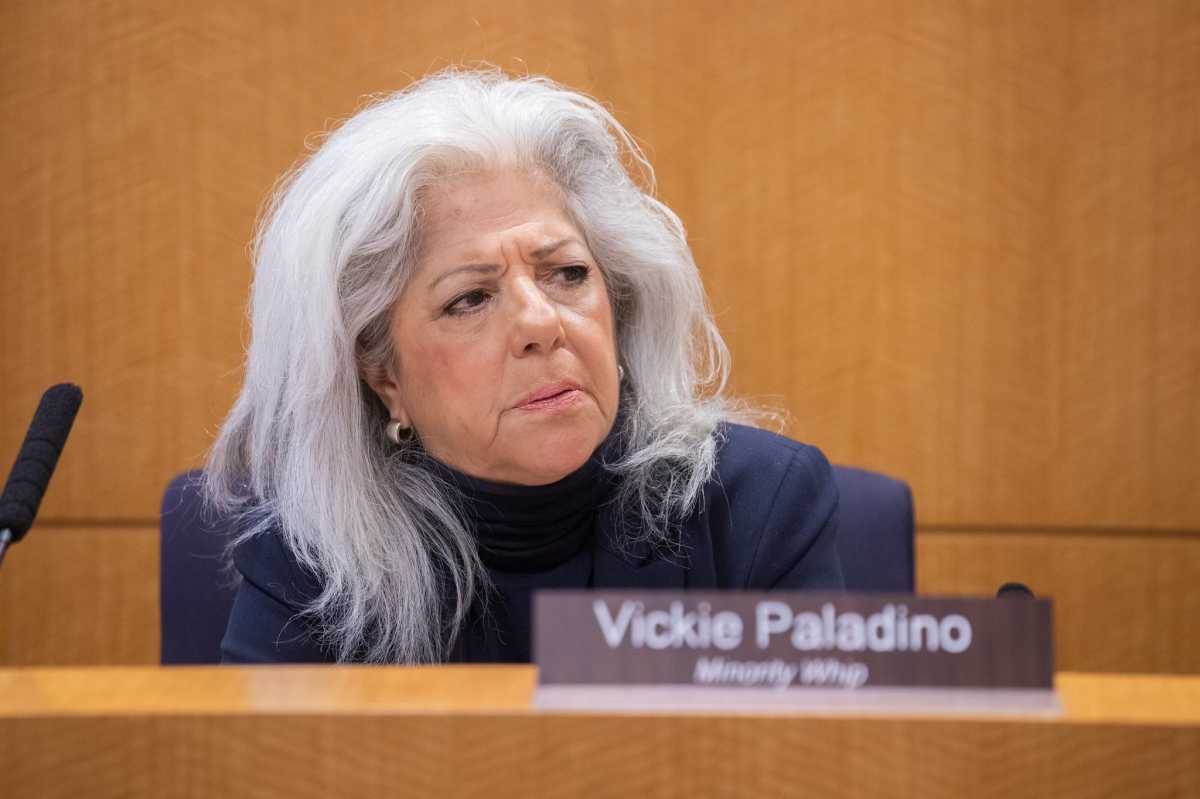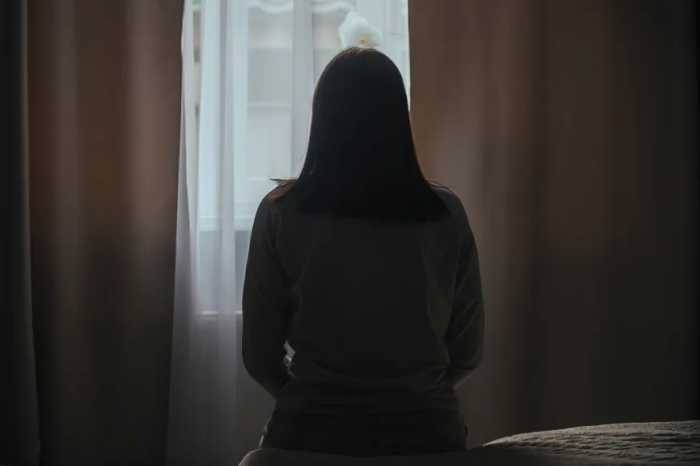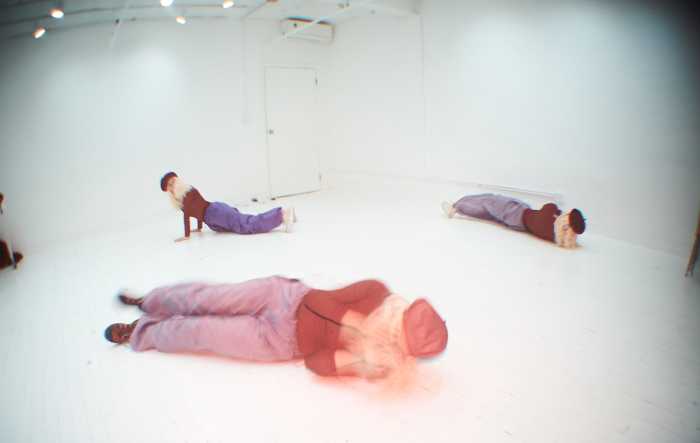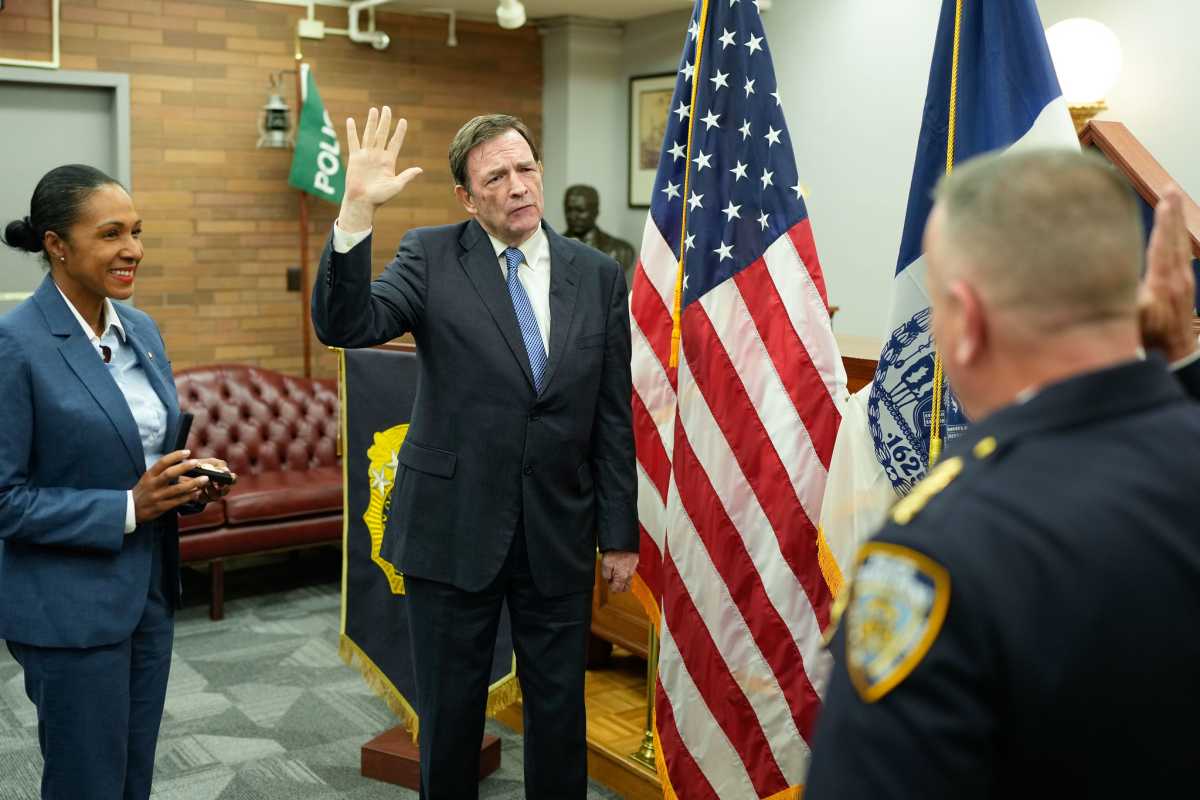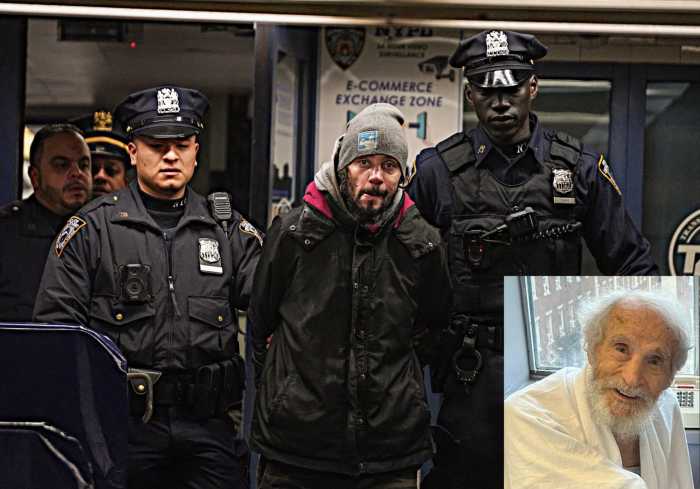By Kelley Tice
The Queens Museum of Art kicked off Women's History Month Thursday last Thursday night with a high-five to female artists both past and present.
Although the trio who represented the five-woman band Antigone Rising were the only female members on hand, they managed to create a larger-than-life presence, making up for those who were conspicuously absent.
A documentary film entitled “Inside the Visible” was the museum's other feature of the evening. Produced by the Institute of Contemporary Art, the 30-minute film ran continuously in the museum's auditorium.
Even still, the “First Thursday” festivities seemed to satisfy the museum's goal of making the facility more user-friendly. With its ample space, the museum provided an excellent venue for the band's strong vocal harmonies and balance of acoustic and bass guitars.
And the Unisphere Cafe where the trio performed was also inviting to those who wanted to just unwind. But most of the 50 or so attendees milled around the buffet and wine tables, talking and listening to the band. A few drifted off to view the film, take part in the hands-on art workshop, or to simply tour the exhibits.
According to Shakira Ferrell, the QMA events officer, the feel of an open house is the real purpose of the museum's First Thursday series, a program begun at the end of 1999. “It's a good way to bring people who don't normally come to the museum,” Ferrell said. “We're in their backyard, why not provide something to do to introduce them to our exhibit,” she added.
In November, the museum kicked off the first Thursday series with a Latin band called Fiesta. Since then the series has featured a jazz band, a DJ and a West-African troupe of dancers and drummers.
Laurence Buckley, the executive director of the QMA, said, “this [event] is something museums are doing all over. It has taken the museum world by storm.” She said: “If you can take a museum and turn it into a community center even if only for one evening a month, you can get the word out that it is accessible.”
Fairly new to the position, Buckley said that drawing more people to the museum has been one of her major thrusts since she arrived there in 1999. Formerly the executive director of the New Britain Museum of American Art in New Britain, Conn., Buckley said she noticed right away that there was no place for visitors and tourists to grab a snack and a cup of coffee. “And, it's all about visitor amenities,” she said.
“It's still very much about the art, but today it's more about the viewers' response to the art and how we can spark their interest,” Buckley clarified. “Today, we try to interpret the art, provide educational services and generally make the museum more inviting and less intimidating,” the otherwise low-key Buckley said enthusiastically.
Citing the festivals in the park and the weekend programs, Buckley said she was just intensifying the efforts begun before she got here.
But under her leadership, the museum has started two new exhibition series called “Queens Focus” and “Community Space.” Its premier exhibits opened Feb. 22 along with “William Glackens: A Journey from Realism to Impressionism,” and “New York Noir: Photographs from the Archives of the New York Daily News.”
Buckley said that one of the goals of these new programs is to give a home to urban images and artwork done by Queens artists. “Our job is about nurturing and rewarding Queens artists,” she said. “We really should have a permanent collection that reflects Queens subject matter and Queens artists.”
Noting that the museum's location in Flushing Meadows Corona Park is an obstacle, Buckley said the museum tries to get bands with big followings to perform at the First Thursday parties. And, in the spring and summer, Buckley said she will move the festivities outside. The museum's main entrance faces the Queens' hallmark Unisphere and is surrounded by a large cobblestoned plaza, ideal for outdoor concerts and gatherings.
This First Thursday in March, however, was still reminiscent of a somber and cold winter day, although that coldness quickly vanished as Antigone Rising warmed up and began to fill the cavernous galleries. Riding the post-feminist wave, the 20-something band performed as if it were completely natural for an all-girl band to be rocking the house. With lead vocalist Kassidy Brown, backed up by Kristen and Cathy Henderson on acoustic and bass guitars, the band's folk-rock sound contrasted sharply with many of the female artists interviewed in the documentary film.
In “Inside the Visible,” contemporary art historians discussed the works of female artists now often forgotten. Also, some living female artists describe their ongoing struggles to be recognized in the art world. Among those discussed were Hannah Hoch, a 1920s Dadaist, who was one of the first artists to do photomontages of the female body; Louise Bourgeois, a sculptor who commented on her own baseless status, “They stand alone as we stand alone,” as well as 1970s artists Martha Rosler and Ana Mendieta, both who directly tackle issues of societal restrictions and female passivity in their artwork. Younger artists such as Ellen Gallagher and Mona Hartoum described the more abstract ideas explored through their artwork.
Speaking to three of the five members of Antigone Rising (two were absent), one feels their comfort level with being artists whose time has come. Started by the Henderson sisters in Long Island, the band first gained a following in the downtown music scene and since then has gone on to perform with such other well-known female musicians as Sarah McLachlan, Indigo Girls and Natalie Merchant, to name a few.
“We're on a crease that's unfolding,” Kristen Henderson said. “Women's issues and fights are going on, but there are also individual and universal issues,” she said.
Native New Jerseyan Kassidy Brown piped up: “If I could send one message it would be to give girls the permission to be who they are – and not be swayed by the media or held down by some idea. We have to work together to accept each other and keep it real.” The three band members said they had not signed with a major label because they wanted to “keep it real” and close.
Antigone Rising will be touring colleges in the Northeast in the coming weeks, but say that they can almost always be found at the Bitter End, their home base on Bleecker Street in Manhattan.


